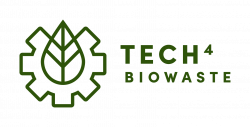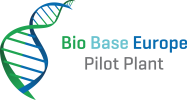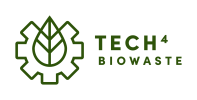Chromatography
| Technology | |

| |
| Technology details | |
| Name: | Chromatography |
| Category: | Pre-processing (Separation technologies), Post-processing (Separation technologies) |
| Feedstock: | all materials |
| Product: | separated products |
Chromatography enables the separation, identification, and purification of the components in a mixture. The mixture is composed of a mobile phase (fluid or gas) and a stationary phase. The stationary phase is either a solid phase or a layer of a liquid adsorbed on the surface a solid support. The separation is based on the differential partitioning between the mobile and the stationary phase. [1] Chromatography may be preparative or analytical. The purpose of preparative chromatography is to separate the components of a mixture for later use, and is thus a form of purification. [2][3] Analytical chromatography is done normally with smaller amounts of material and is for establishing the presence or measuring the relative proportions of analytes in a mixture. The two are not mutually exclusive. [4]
Feedstock
Origin and composition
Through the different chromatography forms and methods (as can be seen below), the possible biomass feedstocks are versatile. Examples are:[5]
- Wood chip
- Residual bacterial biomass
- Sewage sludge
- Straw
- Stalk
- Algae biomass
Pre-treatment
As a purification and analytical process, possible pre-processes are for example[5][6][7]:
- Hydrolysis
- Distillation
- Ammonia fibre expansion
- Polymerisation
- Centrifugation
- Pyrolysis
- Gasification
- Torrefaction
- Hydrothermal processing
- Fermentation
Process and technologies
To separate the components of a mixture, the mixture is dissolved in a substance, the mobile phase, which carries it through a second substance, the stationary phase. The different components of the mixture travel through the stationary phase at different speeds, causing them to separate from one another. [8] The different molecules stay longer or shorter on the stationary phase, depending on their interactions with its surface sites. The separation is based on the differential partitioning between the mobile and the stationary phases. Subtle differences in a compound's partition coefficient result in differential retention on the stationary phase and thus affect the separation. A schematic illustration of the process can be seen below (illustrates column chromatography).
Chromatography methods
By altering the mobile phase, the stationary phase, and/or the factor determining speed of travel, a wide variety of chromatographic methods are available, each ideal for different mixtures. Some of the most common forms of chromatography are as follows.[8]
Techniques by physical state of the mobile phase
- Gas chromatography
- the mobile phase is gaseous
- Liquid chromatography
- the mobile phase is liquid
Techniques by chromatographic bed shape
- Thin-layer chromatography (TLC)
- stationary phase is a thin layer of solid material, usually silica-based, and the mobile phase is a liquid
- Column chromatography
- stationary phase is within a tube (e.g. packed column with silica, as the illustration above)
Techniques by separation mechanism
- Ion exchange chromatography
- separates the components of a mixture based on their charge
- Size-exclusion chromatography
- separates molecules according to their size (Smaller molecules enter pores of the media and, therefore, molecules are trapped and removed from the flow of the mobile phase)
Products
The products of a chromatography depend on which method is applied. When applying a gas chromatography the mobile phase is gaseous, while the stationary phase is solid or viscous liquid. The products here are then gases and the separated molecules are then either bound to the solid or liquid phase. When applying a liquid chromatography the mobile phase is liquid and the stationary phase is solid, leading to liquid and solid end products.
Post-treatment
Technology providers
| Company name | Country | Technology subcategory | Technology name | TRL | Capacity [kg/h] | Processable volume [L] | Feedstock: Food waste | Feedstock: Garden & park waste |
|---|---|---|---|---|---|---|---|---|
| Bio Base Europe Pilot Plant | Belgium | - | Chromatography | 4-6 | - | 8-900 | ● | ● |
| Veg'Extra | France | - | - | - | - | 200-800 | ● | ● |
| W.R. Grace & Co. | Germany, Spain, Sweden | - | TRISYL (R) silicas | - | - | - | ● | ● |
| XPure Systems | The Netherlands | - | XPure-C, XPure-S, XPure-E, XPure-R | 5-7 | 0.1-200 | 100-5000 | ● | ● |
Bio Base Europe Pilot Plant
| General information | |||
| Company: | Bio Base Europe Pilot Plant | 
| |
| Country: | Belgium | ||
| Contact: | chromatography@bbeu.org | ||
| Webpage: | https://www.bbeu.org/what-we-offer/technologies/product-recovery-and-purification/ | ||
| Technology and process details | |||
| Technology name: | Chromatography | Technology category: | Pre-processing (Separation technologies), Post-processing (Separation technologies) |
| TRL: | 4-6 | Capacity: | -ion exchange in water treatment columns: lab scale up to 3000 L columns (and everything in between)
-Exclusion chromatography, bind & elute chromatography… in packed bed columns: 250 mL, 8 L, 10 L, 38 L, 60 L columns kg·h-1 |
| Mobile phase: | Process dependent! Mostly it is watery products but we can use solvents as well. | Pressure: | 5 bar |
| Processable volume: | 8L; 38L; 80L; 900 L | Stationary phase: | Resins = Process dependent! |
| Temperature: | 50 °C | Other: | Preparative chromatography unit (GRACE) – BENCH scale, adsorption chromatography for ATEX environment, |
| Feedstock and product details | |||
| Feedstock: | chemical compounds of biological origin | Product: | separated hydrocarbons |
Bio Base provides scale up of chromatography processes from lab-scale up to 4000 L scale. There is mainly a very broad knowledge of anion exchange, cation exchange and activated carbon processes, since (economically) those are most realistic to scale-up.
Veg'Extra
| General information | |||
| Company: | Veg'Extra | 
| |
| Country: | France | ||
| Contact: | |||
| Webpage: | https://en.vegextra.com/ | ||
| Technology and process details | |||
| Technology name: | Technology category: | Pre-processing (Separation technologies), Post-processing (Separation technologies) | |
| TRL: | Capacity: | kg·h-1 | |
| Mobile phase: | Pressure: | bar | |
| Processable volume: | 200 - 800 L | Stationary phase: | |
| Temperature: | °C | Other: | |
| Feedstock and product details | |||
| Feedstock: | Any liquid biowaste | Product: | Separated fractions |
Veg’Extra has 25 years of experience with currently 300 tons of production per year. As a service provider, it supports you in your projects, advises you and sets up an industrial process for the production of your extracts (actives and ingredients). 25 employees have a wide range of expertise in extraction, separation, purification. Wide range of solvents can be used, except when it is classified as carcinogenic, mutagenic, reprotoxic (CMR).
W.R. Grace & Co.
| General information | |||
| Company: | W.R. Grace & Co. | 
| |
| Country: | Global | ||
| Contact: | https://grace.com/forms/contact-us-product-and-services/ | ||
| Webpage: | https://grace.com/ | ||
| Technology and process details | |||
| Technology name: | TRISYL (R) silicas | Technology category: | Pre-processing (Separation technologies), Post-processing (Separation technologies) |
| TRL: | Capacity: | kg·h-1 | |
| Mobile phase: | Oil | Pressure: | 1 bar |
| Processable volume: | L | Stationary phase: | 99.7% SiO2 |
| Temperature: | 70 - 90 °C | Other: | |
| Feedstock and product details | |||
| Feedstock: | Any liquid biowaste | Product: | Biobased diesel and HVO |
Grace Catalysts Technologies and Grace Materials Technologies provide innovative products, technologies and services that improve the products and processes of our customers around the world. Grace was founded as W.R. Grace & Co. in 1854 in Peru and currently has global locations. Our assets and expertise enable us to collaborate with our customers from the R&D laboratory, through multiple pilot plants, on up through commercial production. Technology Centers are integrated with manufacturing so that commercialization of new products is accelerated. Award-winning Technical Service teams work seamlessly alongside customers to find ways to increase value in our customer processes as well as their products.
From pre-treatment of the vegetable oils and fats to the final polishing or post-treatment, Grace’s TRISYL® silica is proven technology that results in more process savings compared to clay or silicates. Our silica technology comprised of highly pure synthetic amorphous silica was developed for maximum adsorption and significantly reduces phospholipids, trace metals and animal proteins in both physical and chemical refining operations. Recommended for the pre-treatment of feedstock for both renewable diesel and first generation biodiesel, TRISYL® silica can also be used in biodiesel post-treatment by helping to substantially reduce the need for water washing. TRISYL® silica enables the economic conversion of biomass to biodiesel and renewable diesel to be more efficient and environmentally sustainable.
Renewable diesel – commonly referred to as green diesel or HVO (hydrotreated vegetable oil) – continues to grow in prevalence. Grace’s TRISYL® silica helps maximize service life of catalysts by consistently removing trace materials and impurities from difficult-to-refine feedback and helps achieve economies of scale in renewable diesel production. Unlike activated bleaching earth (ABE), TRISYL® silicas provide superior adsorption capacity for phospholipids and metals at all free fatty acid concentrations. This reduces costs on spent solids and disposal but also reduces oil lost during pre-treatment.
XPure Systems
| General information | |||
| Company: | XPure Systems | 
| |
| Country: | The Netherlands | ||
| Contact: | |||
| Webpage: | https://xpure-systems.com/ | ||
| Technology and process details | |||
| Technology name: | XPure-C, XPure-S, XPure-E, XPure-R | Technology category: | Pre-processing (Separation technologies), Post-processing (Separation technologies) |
| TRL: | 5 - 7 | Capacity: | 0.1 - 200 kg·h-1 |
| Mobile phase: | Pressure: | Up to 30 bar | |
| Processable volume: | 100 - 5000 L | Stationary phase: | |
| Temperature: | °C | Other: | |
| Feedstock and product details | |||
| Feedstock: | Any liquid biowaste | Product: | Separated fractions |
XPure is committed to improving separation efficiency by designing and delivering innovative, customized continuous ion exchange and chromatography systems. XPure uniquely features expanded bed adsorption technology that is integrated in our SMB configured systems. This enables us to directly process particulates containing feed streams, for example from fermentation or plant based juice streams.
XPure’s Simulated Moving Bed (SMB) technology overcomes the intermittent nature of classical chromatography by introducing more columns, thus allowing for simultaneous separation to occur. XPure’s patented technology for continuous chromatography and ion exchange enables the isolation of desired components from such complex mixtures while improving yield and purity at lower costs. Our systems integrate modular and scalable simulated moving bed hardware with a smart and flexible software platform, enabling the flexibility to implement a wide range of process control strategies. This holistic approach reduces resin and solvent consumption and increases product concentrations, purity, and yields. This singular focus on process technology and equipment means we are independent of resin and media suppliers. Rather, our team of experts deliver the suitable and cost-effective solutions to meet your separation requirements.
XPure enables the purification of bio-based chemicals and mild fractionation of food components using an efficient technology that contributes to a sustainable process industry.
Open access pilot and demo facility providers
Patents
Currently no patents have been identified.
References
- ↑ Ozlem Coskun, 2016: Separation Tecniques: CHROMATOGRAPHY. Northern Clinics of Istanbul, Vol. , . doi: https://doi.org/10.14744/nci.2016.32757
- ↑ Mirna González-González, Karla Mayolo-Deloisa, Marco Rito-Palomares, 2020: Chapter 5 - Recent advances in antibody-based monolith chromatography for therapeutic application. Elsevier, Vol. , (Approaches to the Purification, Analysis and Characterization of Antibody-Based Therapeutics), 105–116. doi: https://doi.org/https://doi.org/10.1016/B978-0-08-103019-6.00005-9
- ↑ Todd M Przybycien, Narahari S Pujar, Landon M Steele, 2004-10-01: Alternative bioseparation operations: life beyond packed-bed chromatography. Current Opinion in Biotechnology, Vol. 15, (5), 469–478. doi: https://doi.org/10.1016/j.copbio.2004.08.008
- ↑ K. Hostettmann, 1998: Preparative Chromatography Techniques : Applications in Natural Product Isolation. Springer Berlin Heidelberg, Berlin, Heidelberg.
- ↑ a b Jun Sheng Teh, Yew Heng Teoh, Heoy Geok How, Farooq Sher, 2021-09-08: Thermal Analysis Technologies for Biomass Feedstocks: A State-of-the-Art Review. Processes, Vol. 9, (9), 1610. doi: https://doi.org/10.3390/pr9091610
- ↑ M. Tian, K. H. Row, 2013-09-01: Separation of Glucose and Bioethanol in Biomass with Current Methods and Sorbents. Journal of Chromatographic Science, Vol. 51, (8), 819–824. doi: https://doi.org/10.1093/chromsci/bmt044
- ↑ Benjamin R. Caes, Thomas R. Van Oosbree, Fachuang Lu, John Ralph, Christos T. Maravelias, Ronald T. Raines, 2013-11: Simulated Moving Bed Chromatography: Separation and Recovery of Sugars and Ionic Liquid from Biomass Hydrolysates. ChemSusChem, Vol. 6, (11), 2083–2089. doi: https://doi.org/10.1002/cssc.201300267
- ↑ a b Thermo Fischer, : What is Chromatography and How Does it Work? , Last access 14.02.2022. https://www.thermofisher.com/blog/ask-a-scientist/what-is-chromatography/

